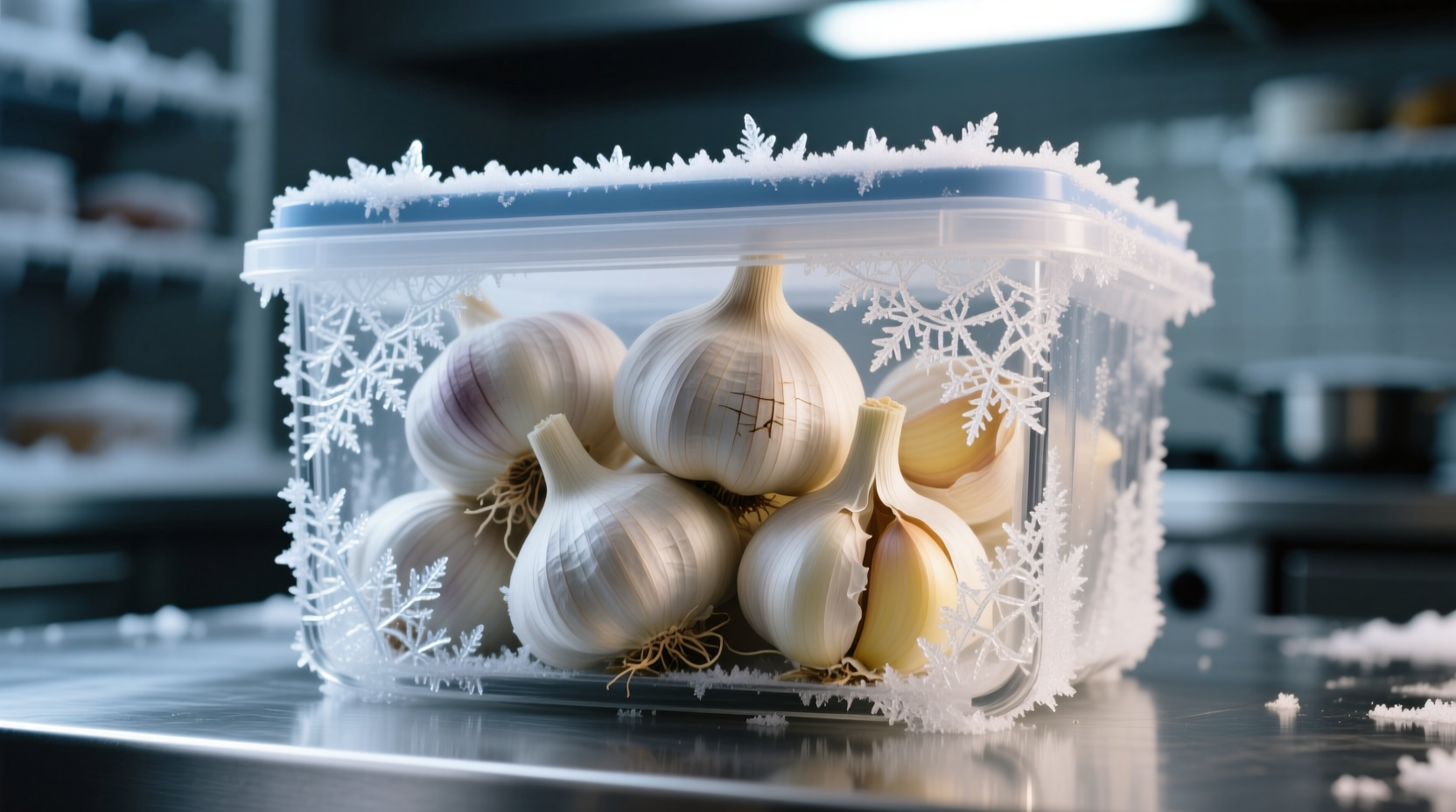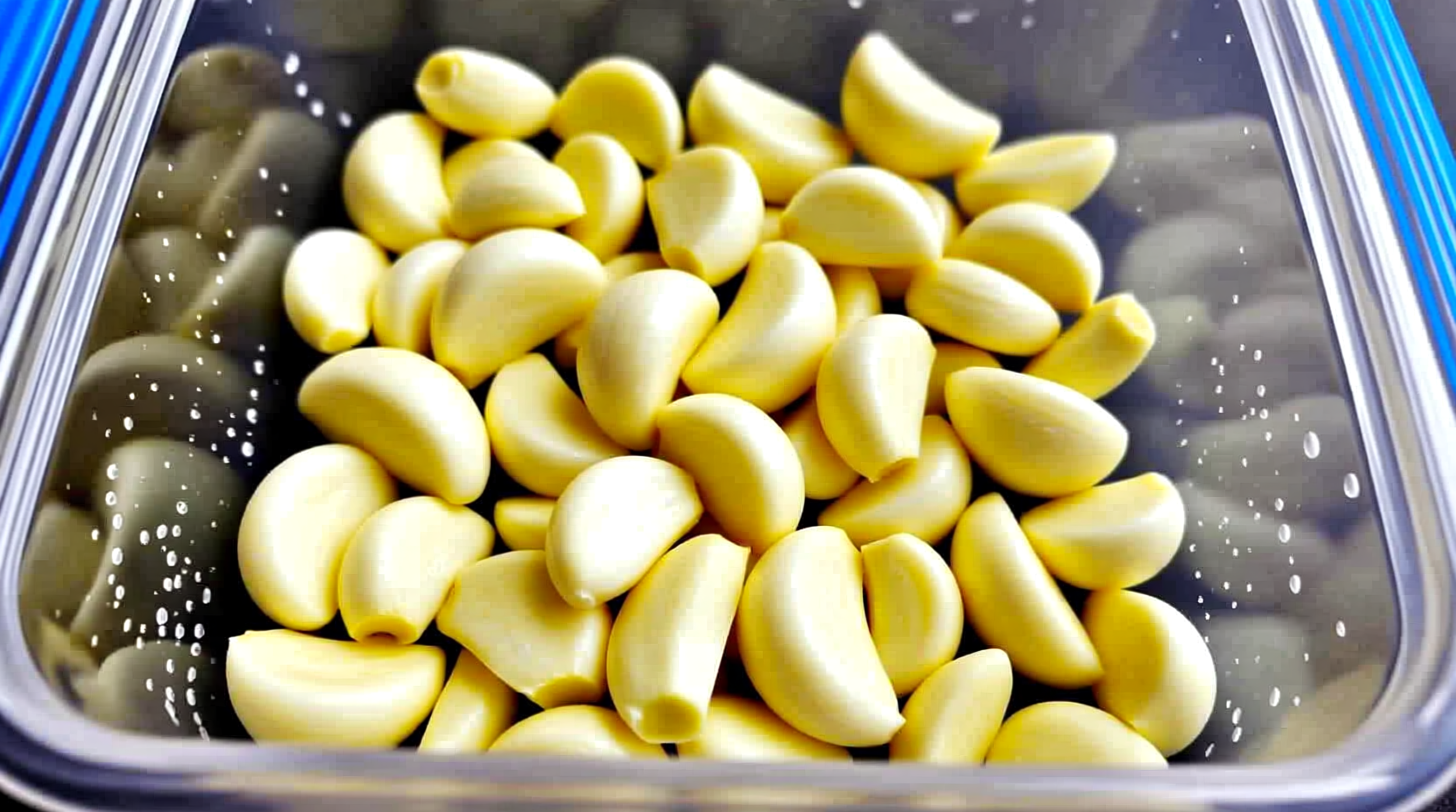Yes, garlic cloves can be safely frozen for up to 12 months while maintaining flavor and usability. Freezing preserves garlic's pungency better than refrigeration and offers a practical solution for preserving surplus harvests or bulk purchases without significant quality loss.
Discover exactly how to freeze garlic properly, which methods work best for different cooking needs, and how frozen garlic compares to fresh in your favorite recipes. This guide delivers professional preservation techniques backed by food science research to help you maximize your garlic's shelf life without compromising flavor.
Why Freezing Garlic Makes Perfect Sense
Garlic often spoils before you can use it all, leading to wasted food and money. Freezing solves this problem effectively. Unlike refrigeration, which only extends garlic's life by a few weeks, proper freezing techniques maintain garlic's essential oils and flavor compounds for nearly a year.
Food scientists at the University of California Cooperative Extension confirm that freezing preserves allicin—the compound responsible for garlic's distinctive flavor and health benefits—more effectively than other preservation methods. Their research shows frozen garlic retains 85-90% of its original flavor profile when stored correctly.
Your Step-by-Step Freezing Guide
Follow these professional techniques to freeze garlic based on how you'll use it in cooking:
Method 1: Freezing Whole Unpeeled Cloves (Best for Long-Term Storage)
This simplest approach works well when you need whole cloves for roasting or slow cooking:
- Place unpeeled garlic cloves directly in airtight freezer bags
- Remove excess air before sealing
- Label with date
- Store at 0°F (-18°C) or below
When needed, remove cloves while still frozen and peel—the skin will slip off easily after freezing.
Method 2: Freezing Peeled Cloves (Best for Quick Cooking)
For immediate use in recipes:
- Peel cloves completely
- Spread in single layer on parchment-lined tray
- Flash freeze for 2 hours
- Transfer to labeled freezer containers
Method 3: Freezing Minced or Pureed Garlic (Best for Sauces and Marinades)
Professional chefs prefer this method for consistent flavor distribution:
- Process peeled cloves with 1-2 teaspoons olive oil per cup
- Pour into ice cube trays
- Freeze solid (4-6 hours)
- Transfer cubes to freezer bags

How Frozen Garlic Compares to Fresh
| Characteristic | Fresh Garlic | Frozen Garlic |
|---|---|---|
| Flavor intensity | Sharp, pungent | Slightly milder (85-90% retention) |
| Texture | Firm, crisp | Softer after thawing |
| Best for | Raw applications, finishing dishes | Cooking, sauces, soups |
| Storage duration | 1-2 months at room temperature | 10-12 months in freezer |
Storage Duration Guidelines
Properly frozen garlic maintains quality according to these timeframes:
- Whole unpeeled cloves: 12 months
- Peeled cloves: 10 months
- Minced/pureed garlic: 8 months
The USDA Food Safety and Inspection Service confirms these durations maintain optimal quality while ensuring food safety. Beyond these timeframes, garlic remains safe but gradually loses flavor intensity.
Using Frozen Garlic in Your Cooking
Professional chefs recommend these techniques for best results:
- Direct-to-pan method: Add frozen minced garlic directly to hot oil—no need to thaw
- Roasting whole cloves: Toss frozen unpeeled cloves in oil and roast at 400°F (200°C) for 30-40 minutes
- For sauces and soups: Frozen garlic cubes melt perfectly into simmering liquids
Remember that frozen garlic works best in cooked dishes. The texture change makes it less suitable for raw applications like aioli or salad dressings where fresh garlic's crisp texture matters.
Common Freezing Mistakes to Avoid
Prevent quality issues with these professional tips:
- Avoid moisture exposure: Always use airtight containers to prevent freezer burn
- Don't skip flash freezing: Prevents cloves from sticking together in clumps
- Never freeze in water: Causes flavor dilution and texture degradation
- Don't store near strong odors: Garlic readily absorbs surrounding flavors
When Freezing Isn't the Best Option
Consider these alternatives depending on your needs:
- For immediate use (1-2 weeks): Store at room temperature in mesh bags
- For medium-term storage (1-3 months): Preserve in olive oil in refrigerator
- For raw applications: Fresh garlic maintains superior texture
The National Center for Home Food Preservation notes that while freezing works well for most cooking applications, certain traditional preparations like garlic confit offer better texture for specific dishes.
Maximizing Your Garlic Investment
Whether you've harvested your own garlic or bought in bulk, proper freezing techniques ensure you never waste this valuable ingredient. By understanding which freezing method matches your cooking style and respecting storage timeframes, you'll always have flavorful garlic ready for your kitchen creations.











 浙公网安备
33010002000092号
浙公网安备
33010002000092号 浙B2-20120091-4
浙B2-20120091-4